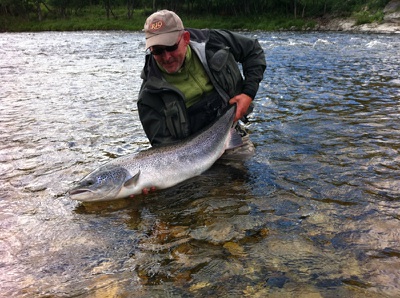Bright summer salmon hooked on a salmon dry fly fished at dead drift
Drifting a salmon dry fly , skating a Chernobyl Ant or hitching a tube fly is foremost visual sports…On this page we will show you some images that might guide you at the river
The taking spot Salmon. Dry fly pioneer George M. L. La Branche wrote in his book The Salmon & The Dry Fly In 1924; one should find places in the river where the currents would drift insects to the waiting salmon.
La Branche, who also was an avid trout fisherman, was of the firm belief that the salmon would choose to rest at such spots in the river and would then only react to a fly presented through a very accurate cast delivering the fly in these feeding lanes or groves as La Branche would call them. We now know that it isn’t necessarily down to that particular cast. The salmon isn’t always online, and the much fruitless casting is an expected part of the sport, actually, the casting can be used as constructive groundwork in preparing the salmon to bite.
Salmon just about to hit a dead drifting White Tube Bomber – this is the image you will be least likely to forget when you have hooked a salmon on a dry fly
The shallow spot
Above: two big salmon (centre of picture) resting in shallow water. This blueish colour will reveal the salmon to the experienced eye. The biggest fish was caught 24 hours later – 10 kg! Big fish will seldom rest in such a shallow lie for long – but the shallow water is a good taking spot for the salmon dry fly man and well worth visiting – when you once have found the place. Snell’s Window is small on shallow water, so a very accurate cast would be necessary…Read about Snell’s Window here
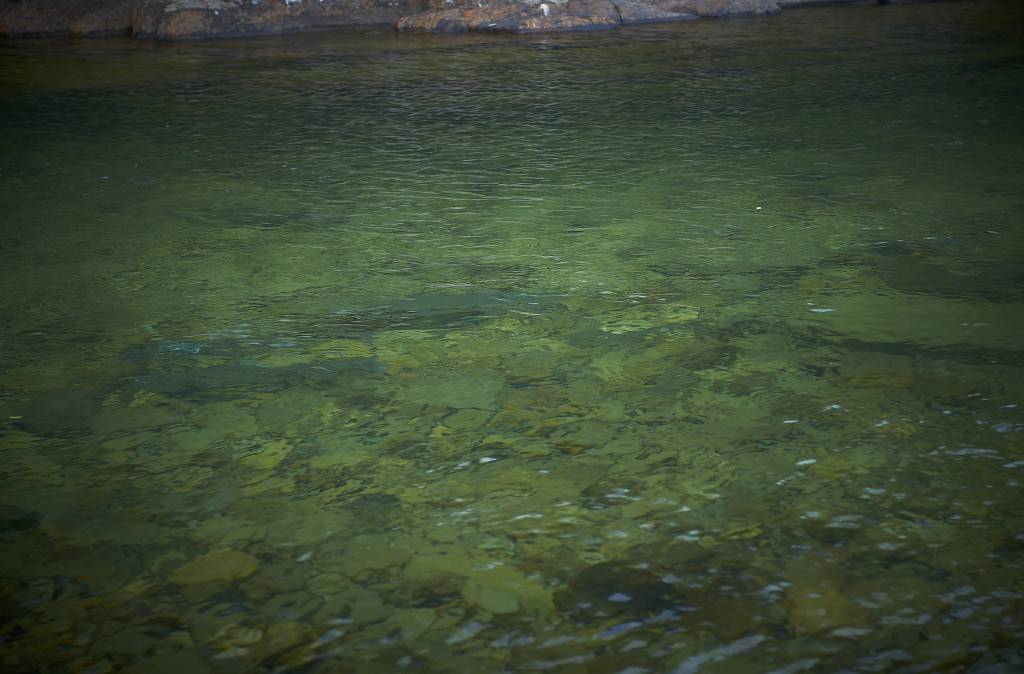
The exact spot every time
Much like the trout, the salmon will stay in given places in the river year after year. These places may change when the river drops, the riverbed or the water flow is altered. Some of these places will be so-called taking spots. Places where salmon, for different reasons, will rise and intercept your dry fly. Once such a spot is found, try to remember it – salmon might be their next time you come around.
Above: a set of 3 big fish lying on the river bed. The two fish in front ca 9 -10 kg. – The rear fish is a big male fish in the 18 – 20 kg range.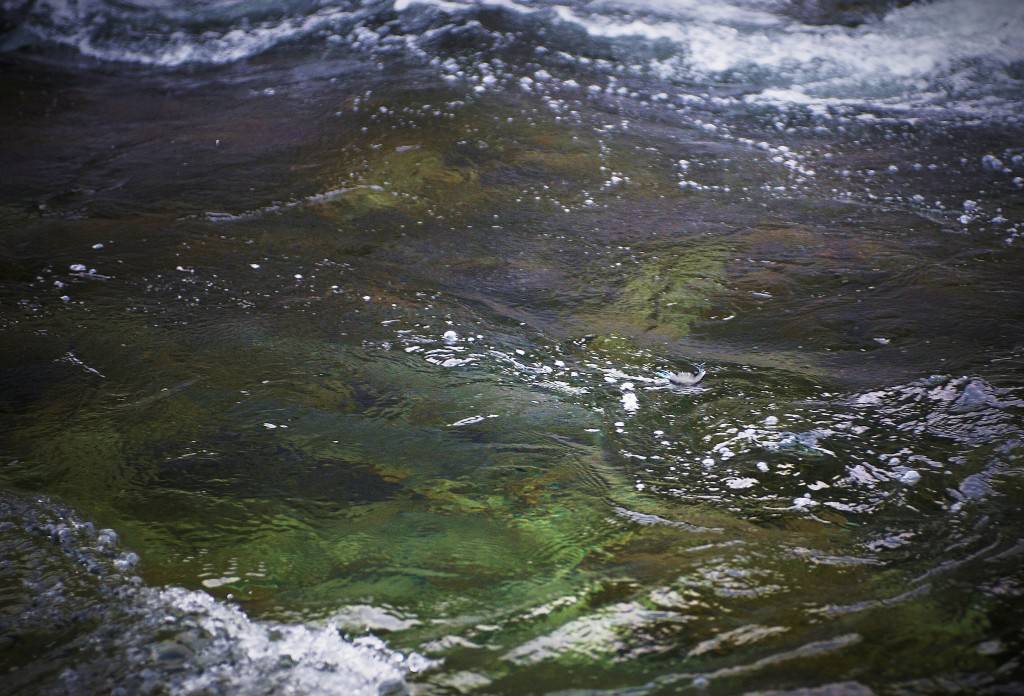
In the eye of the pool
One prominent female salmon and one smaller male resting in the eye of the pool (white dry fly a bit in front of them). From my experience, more than one fish and preferably more than two is better – Not only because more fish is advantageous but because the chemistry of the fish seems to alter when more than two fish is near. The presence of big female salmon is always positive – and will often draw attention from other fish…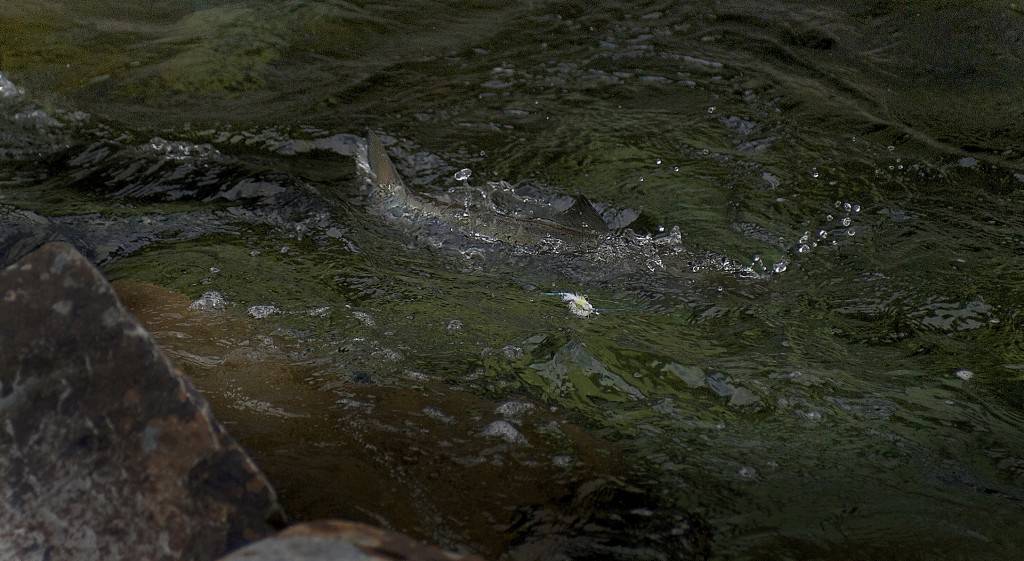
Salmon dry fly inspectors
One small salmon is coming up for dry fly inspection – It is well worth spending time on such a fish – try to use flies in the same colour and pattern – but change the size. Let the fish rest in between casting – but try to keep the fly at a possible dead drift… if doing so, you are less likely to use up too much crucial attention from the fish, and hook-up could be possible later.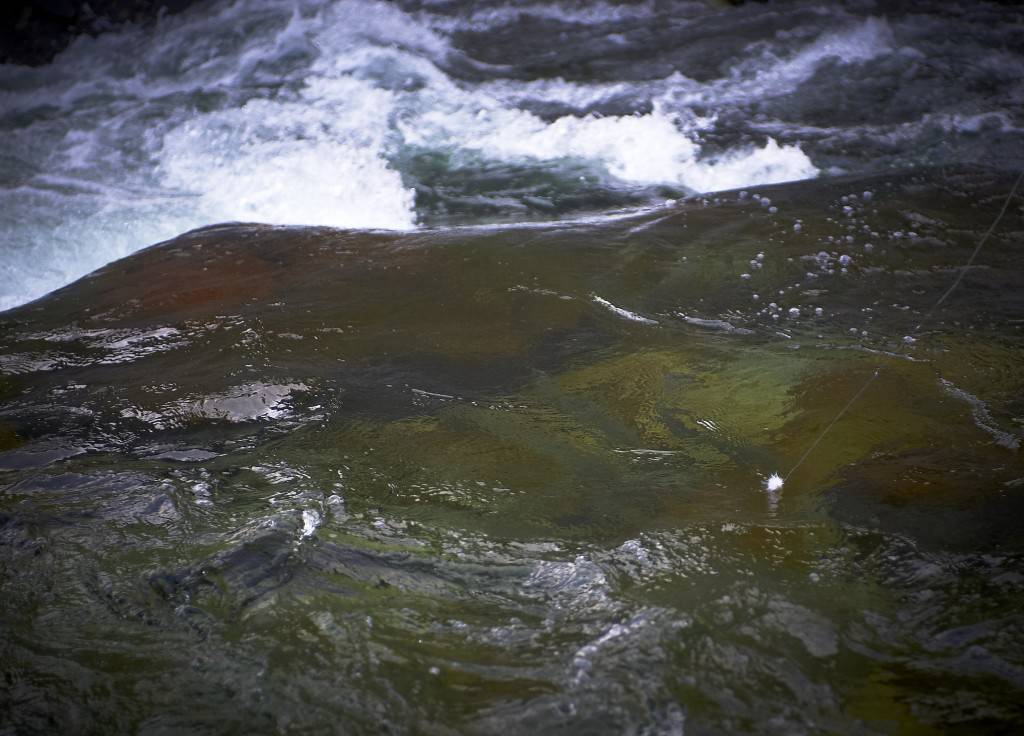
Dapping the salmon dry fly
Above: a little group of fish resting just at the neck of the pool – Having a look at my Tube Bomber. Fly kept at a dangle. Sometimes I have caught fish just keeping the fly above the fish, not touching the water’s surface. In fast waters, I use a technique where I back the fly down towards the fish – The speed I use Is something like a 3/4 of the speed of the current – something you will learn to control through practice. The hit from the salmon will be fast and furious…Waking a Bomber
Anglers pursuing Atlantic Salmon with dry flies like Bombers will often fish the fly at dead-drift and not wake it as steelhead anglers do – But small patterns of the Bomber can be efficient when waked, and we have designed miniature versions of the Moose Turd Bomber made by Mr Bill McMillan – done on our Riffling Hitch Tube.
See these miniature Moose Turd Bombers in the Fishmadman Shop
The choice of colour on a salmon dry fly
Left: The Green Tube Bomber used to catch this small grills has a green tone favoured by many anglers fishing the North of Norway in birch tree-lined rivers. It might be the background reflecting into the river that helps to display this salmon dry fly in just the right way.Anglers at every river system have their favourite colours for salmon flies – If these flies had a random mixture of colours – we could say that colour had a minimal effect – But colours on salmon flies aren’t random – they seem to group up to things like water-colour and the surrounding texture.
The colour of the salmon dry fly does matter, as it also matters with sub flies. Here are a few guidelines –
The orange and brown flies seem to be a good choice for peaty rivers…saying this, I will note that – flies with a bright or contrast filed design, like all White or Black & White Bombers, also work excellent on peaty rivers –
Dark or bright Green – fluorescent yellow flies work on clear rivers with open skylines – at the same time, the Green coloured flies are favoured by many anglers fishing the North of Norway in birch tree-lined rivers –
Black & White flies as the Bomber works excellently in dim light conditions…but may also work wonders on a bright sunny day.
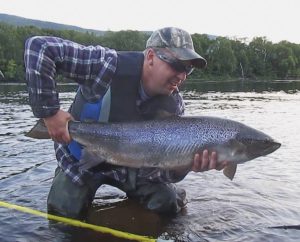
Positioning the salmon dry fly - Correctly
A fantastic 3-D film made by animation wizard Mikkel Strøbech
The Take
To the salmon dry fly angler, the core of fly fishing lies in the take. The enthralling and hypnotic experience of seeing a fish coming to the surface to hit the fly can`t be matched by much.
Some salmon will take the salmon dry fly savagely wild and furiously fast. Others will take their time and rise slowly and finally suck the fly from the surface – Bigger salmon in the 10 – 15 kilo range will generally be slow starters and will need a well-presented fly to allow them to work their way up to the surface. Working out the correct tactic to use is very much a matter of experience, and when presenting the fly, the angler will need to consider river depth and river flow. The eyesight of salmon is built to look for insects in a cone-shaped 96-degree window upwards (Technically termed Snell`s Window) – If it finds interest in your drifting fly, it will start its rise with precision so it cuts right into the path of the fly when it is above it lies. These things aren’t always specific terms, and salmon will sometimes act in unpredictable ways – Some can follow the fly closely for many meters downstream before grabbing it – Some fish will jump high out of the water and then grab the fly from above.
Jumped out of the water to take the salmon dry fly from above!
14-kilo salmon on a salmon dry fly
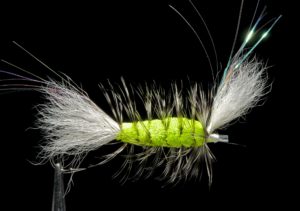 Norwegian angler Jan Harry Årsen with + 14 kilos (+ 30 lbs) – Fish jumped out of the water to grab big Bright Green Tube Bomber ™ from above – Fish caught in Lakselv River in the very north of Norway August 2012. Cloudy conditions. Water temperature 11 degrees Celsius (51.8 degrees Fahrenheit) Hook used: Owner STN-36BC Treble #8 –
See fly in the shop
Norwegian angler Jan Harry Årsen with + 14 kilos (+ 30 lbs) – Fish jumped out of the water to grab big Bright Green Tube Bomber ™ from above – Fish caught in Lakselv River in the very north of Norway August 2012. Cloudy conditions. Water temperature 11 degrees Celsius (51.8 degrees Fahrenheit) Hook used: Owner STN-36BC Treble #8 –
See fly in the shop

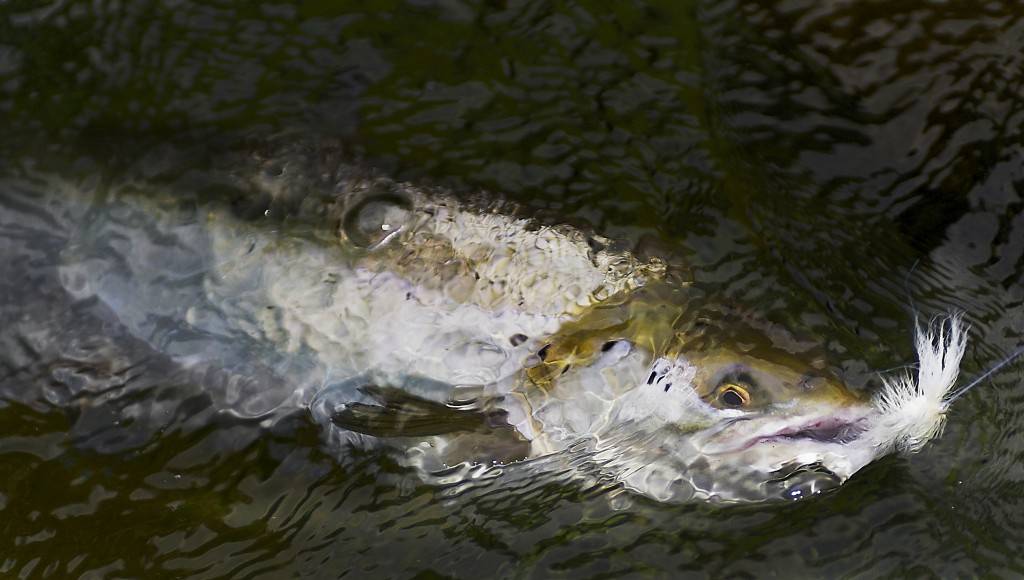
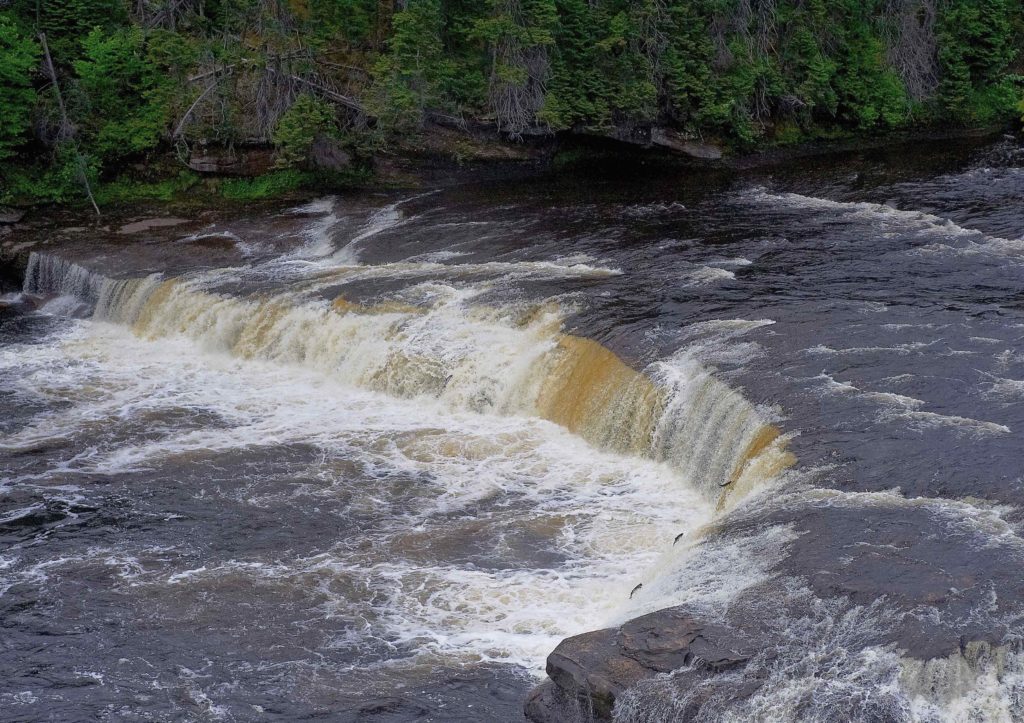
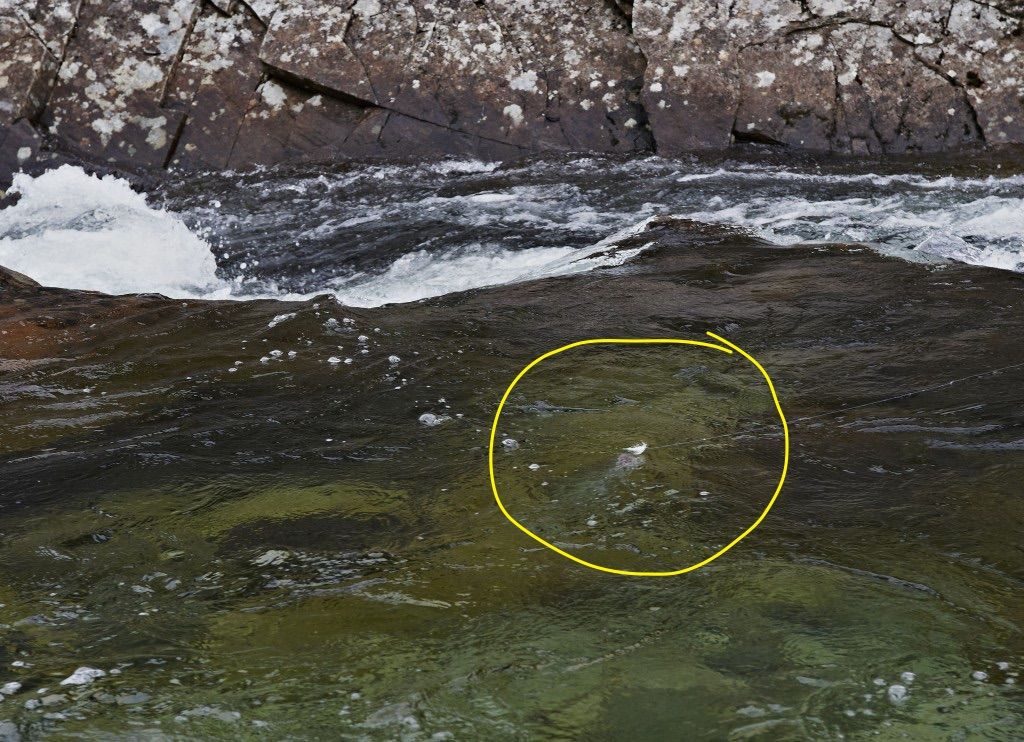
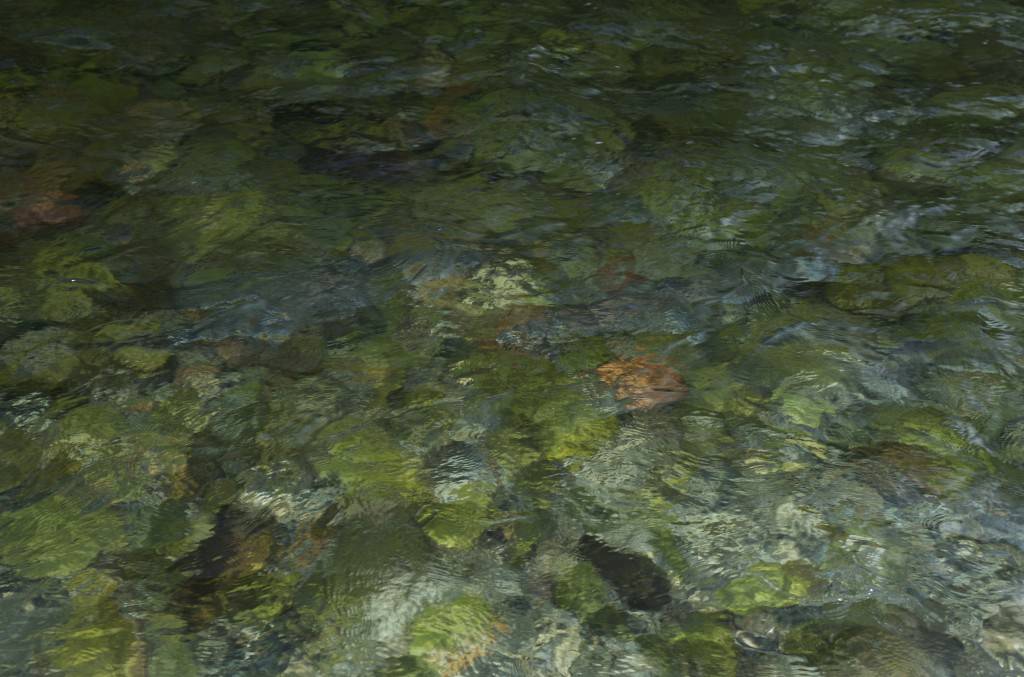
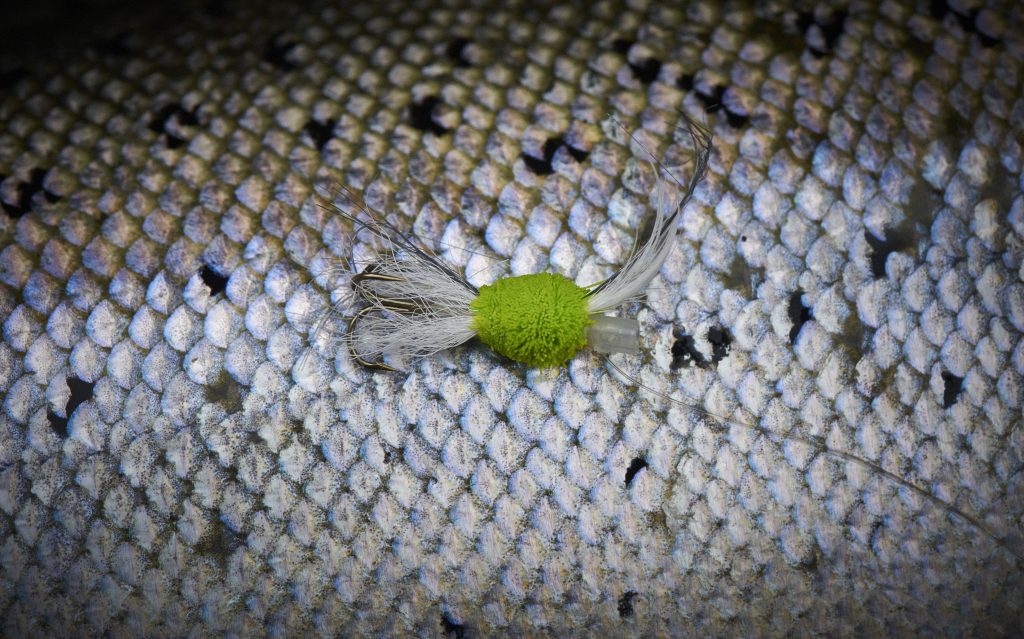
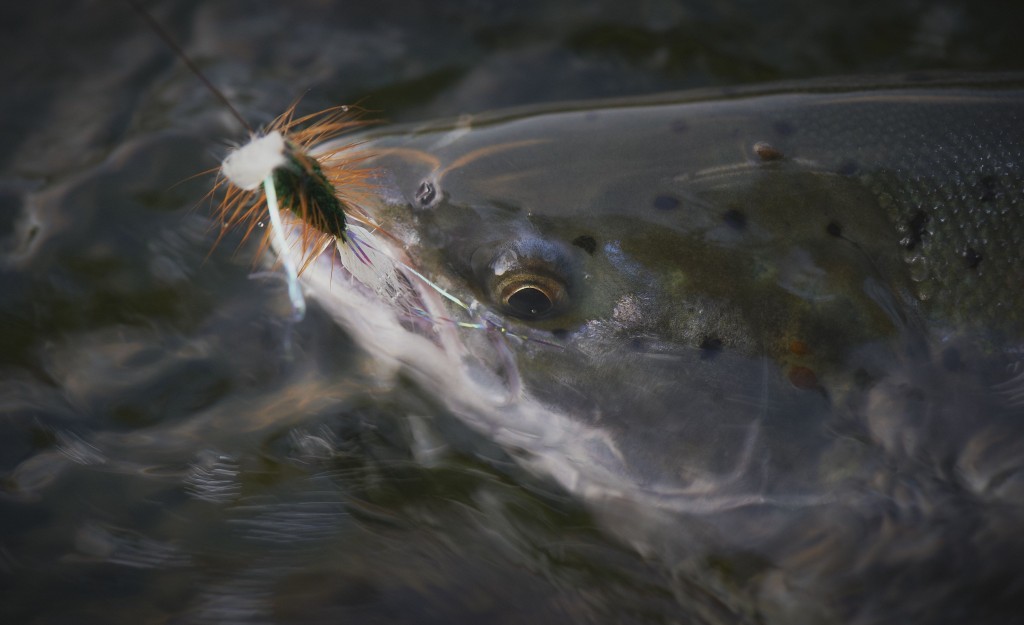
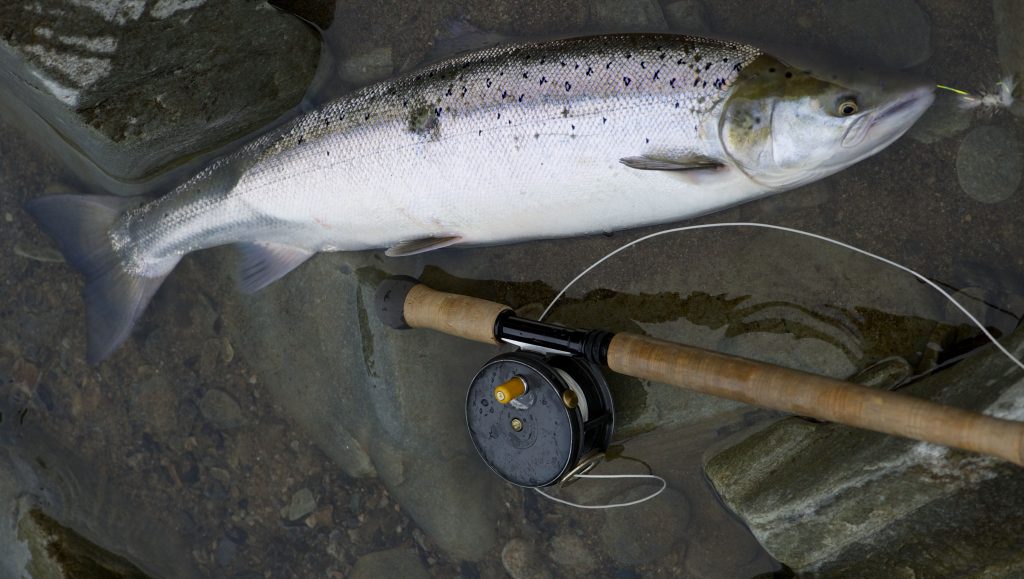
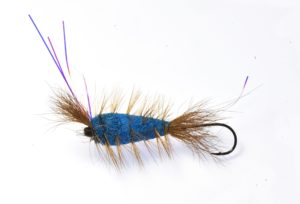 Read more about
Read more about 